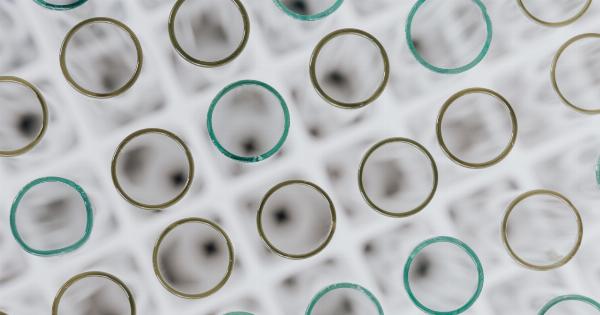Tears are a natural and essential bodily function that serve various purposes. From expressing emotions to nourishing and protecting our eyes, tears play an important role in our overall well-being.
In this article, we will delve into the world of tears, exploring their causes, symptoms, and treatment options for various tear-related conditions.
Types of Tears
Tears can be broadly classified into three main types:.
1. Emotional Tears
Emotional tears are primarily related to our emotions. They are often triggered by intense feelings such as joy, sadness, or even laughter. Emotional tears are usually accompanied by specific emotional experiences and provide relief and release.
These tears contain elevated levels of stress hormones, such as prolactin, which helps in releasing tension.
2. Reflex Tears
Reflex tears are the tears we produce in response to external stimuli. For example, when our eyes are exposed to irritants like onion fumes, smoke, or strong winds, the tearing reflex is triggered as a protective mechanism.
Reflex tears help to wash away foreign particles and potentially harmful substances from the surface of our eyes.
3. Basal Tears
Basal tears are the tears that keep our eyes moist and lubricated throughout the day. They are continuously produced by the tear glands to maintain the necessary moisture and integrity of the ocular surface.
Basal tears are essential for clear vision and preventing dryness and irritation.
Causes of Tears
While emotional tears are triggered by intense feelings, reflex tears and basal tears have different causes:.
1. Reflex Tears Causes
Reflex tears are primarily caused by external stimuli that irritate the eyes. Some common causes include:.
- Onion fumes or vapors
- Smoke
- Pollutants
- Strong winds
- Bright lights
- Allergens, such as pollen or dust mites
- Foreign objects
2. Basal Tears Causes
Basal tears are produced naturally throughout the day to keep our eyes moisturized. However, certain factors can disrupt the tear production and lead to dry eyes. Common causes include:.
- Aging
- Hormonal changes
- Excessive screen time
- Environmental conditions (dry air, wind, or air conditioning)
- Use of certain medications
- Underlying medical conditions (Sjögren’s syndrome, autoimmune disorders, etc.)
Symptoms of Tears
The symptoms of tears can vary depending on the underlying cause. Some common symptoms associated with tears include:.
- Excessive tearing, also known as epiphora
- Dry eyes
- Irritation
- Burning or stinging sensation
- Blurry or fluctuating vision
- Sensitivity to light
- Eyes feeling tired or heavy
Treatments for Tears
The treatment options for tears depend on the specific tear-related condition. Here are some common treatments:.
1. Artificial Tears
For individuals experiencing dry eyes or a lack of basal tears, artificial tears can be used to supplement the natural tear film. These over-the-counter eye drops help to lubricate the eyes and provide relief from dryness, irritation, and discomfort.
2. Warm Compresses
If your tears are related to blocked tear ducts or inflammation, applying a warm compress to the affected area can help alleviate symptoms.
The warmth helps in opening up the blocked ducts and promoting tear flow, providing relief from excessive tearing or dryness.
3. Prescription Eye Drops
In cases where artificial tears do not provide adequate relief, a healthcare professional may prescribe medicated eye drops.
These drops may have anti-inflammatory properties or help increase tear production, depending on the underlying cause of the tears.
4. Tear Duct Probing
In some cases of persistent excessive tearing due to blocked tear ducts, tear duct probing may be recommended. This procedure involves inserting a thin probe into the tear ducts to open them up and restore proper tear drainage.
5. Surgery
In rare cases where there is a structural abnormality in the tear drainage system, surgery may be necessary to address the underlying issue. Surgical procedures can help correct any anatomical abnormalities and restore normal tear flow.
When to Seek Medical Attention
If you are experiencing persistent or severe symptoms related to tears, it is important to seek medical attention.
An eye care professional can evaluate your condition, determine the underlying cause of the tears, and recommend appropriate treatment options.
Additionally, if you notice any sudden changes in your tear production or experience eye trauma, it is crucial to seek immediate medical attention to prevent any potential complications.
Conclusion
Tears are a vital part of our overall eye health and serve various purposes. While emotional tears are a natural response to intense emotions, reflex tears and basal tears play essential roles in protecting and nourishing our eyes.
Understanding the causes, symptoms, and treatment options related to tears can help individuals seek appropriate care and maintain eye health. If you are experiencing persistent symptoms or have any concerns, consult with an eye care professional for comprehensive evaluation and guidance.




























